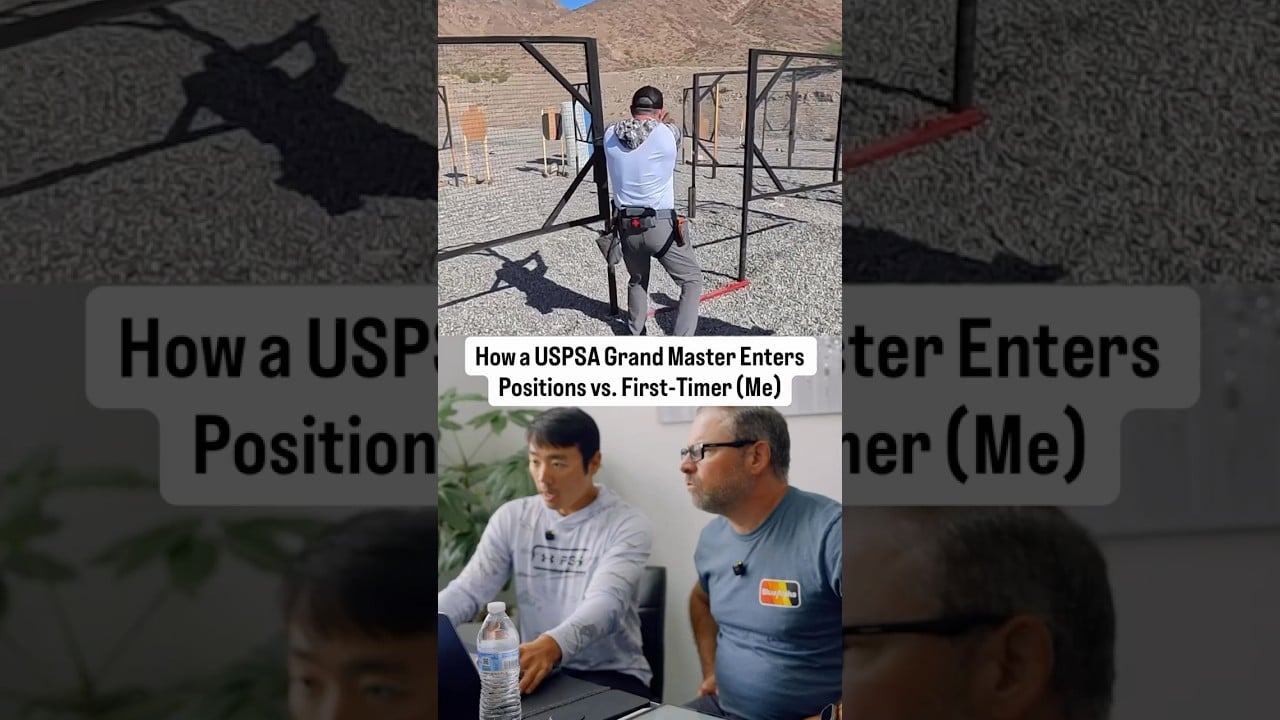After my first two USPSA matches, USPSA Grand Master Joon Kim broke down my runs and pointed out areas where I could move more efficiently through stages. This clip highlights one of the biggest takeaways — how to enter positions effectively.
On my stage I treated each position like a separate step: move > stop > aim > shoot. Joon’s version compresses that chain into a single flowing motion. Watching his run right next to mine was an immediate lesson in economy of motion.
What Joon pointed out:
- Dead time is wasted time. Any time you’re moving and not shooting is “dead time.” The goal is to overlap tasks so you’re ready to shoot the moment you stop moving.
- Aim up before you stop. Instead of running to a spot, stopping, then getting the sights on target, get the gun up while you’re moving so you’re already aimed when your foot hits the ground.
- Soft vs. hard entry. Match your entry style to the target and your skill level. For an open target with simple geometry, Joon suggests a soft entry—stabilize on the move, use the obstacle to line up, then attack the next target.
- Timing is everything. He times the first shot to the foot placement — when that left foot plants, the shot should be breaking. Small timing wins add up fast.
Since that breakdown, this has been one of the biggest things I’ve focused on in both dry fire and live fire. I’ve been working to bring the gun up earlier, time my footwork to my first shot, and smooth out my entries so they flow instead of stop and start. It’s still a work in progress, but knowing exactly what needs improvement makes every session more focused — and that’s how real progress happens.
Read full article here


